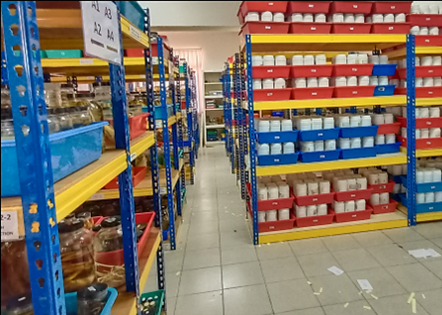
The wet collection room at RRC, with specimens arranged in a system akin to the library for easy access and management.
By Izwandy Idris
Malaysia is truly a maritime nation with its marine space twice larger than the land area. The nation’s 4,675 km coastline borders the Strait of Malacca, the South China Sea, and the Sulu-Celebes Sea at the centre of Southeast Asia. Our reliance on the sea varies from trade, defence, food, economic exploitation, and other indirect functions. The Strait of Malacca is the world’s second busiest shipping lane; the South China Sea is the main hydrocarbon reservoir and the islands in the Sulu-Celebes Sea hold the best dive sites in the world. At the same time, Malaysians are among the world’s largest fish consumers, consuming an average of 56.5 kilograms per person annually. Hence, the ecosystem services of the seas are critical to Malaysia’s survival and functionality as a maritime nation.
To ensure the ecosystem services provided by the seas continues, adequate information about our seas is imperative. These include data on physical, chemical, and biological components as well as underwater biodiversity. Information about our seas is needed for maritime and resource management, environmental monitoring, maritime security and safety, etc.
Our understanding of Malaysian marine biodiversity could be better. A proper record is required to determine our known and to predict the unknown diversity. Changes in the marine ecosystem due to climate change, pollution and bioprospecting inadvertently impact species composition. Moreover, advancements in the taxonomic area (identifying and characterising organisms) may result in certain species bearing a different name than before. As a result, biodiversity data must be supported by deposited specimens for verification and updating. This is one reason why natural history museums or repositories such as the South China Sea Repository and Reference Centre (RRC) exist – as the depositories of marine biodiversity for the nation.
RRC was initially incepted in 2004 as the Biodiversity Museum and went through several rebranding exercises before settling on its current name in 2012. The primary goal of the RRC is to properly maintain, record, and prepare marine specimens for diverse uses such as research, reference, and knowledge transfer. The main users of specimens deposited at RRC are researchers (mostly, but unlimited to, taxonomists and ecologists) and educators. Furthermore, RRC aims to build networks with other museums and educational institutions within and beyond Malaysia to both improve specimen management and increase specimen engagement by users.
RRC has established itself as one of Malaysia’s premier marine repositories since its inception 18 years ago. The number of registered specimens lots has increased from 38 in 2006 to more than 50,000 in 2022, with an estimated value of MYR7.5 million. 70 of these are classified as ‘type’ (holotype and paratype) specimens, directly used to describe new species in science.
Countless deposited specimens came from unique or important locations, such as hard corals from Malaysian-claimed atolls in the Spratly Islands. These specimens were collected by UMT researchers and from other local and international institutions such as Universiti Putra Malaysia and Kagoshima University in Japan.
These deposited specimens provide physical proof of their presence in Malaysian waters. This can serve as the catalyst for both habitat and species-specific conservation, for commercial uses to combat alien and invasive species and to justify sovereign rights or areas of national interest. This attracts regular visits to from local and overseas researchers, translated into scholarly papers and books.
RRC has been recognised as a marine diversity data provider by numerous authorities, including the Ministry of Natural Resources (National Marine Repository Centre) and the Malaysian Biodiversity Information System (MyBIS). The Ocean Biodiversity Information System (OBIS) designated RRC as the Malaysian Node in 2017. Furthermore, the Australian Government has designated and certified RRC as one of two Malaysian agencies authorised to exchange specimens with the Australian counterparts.
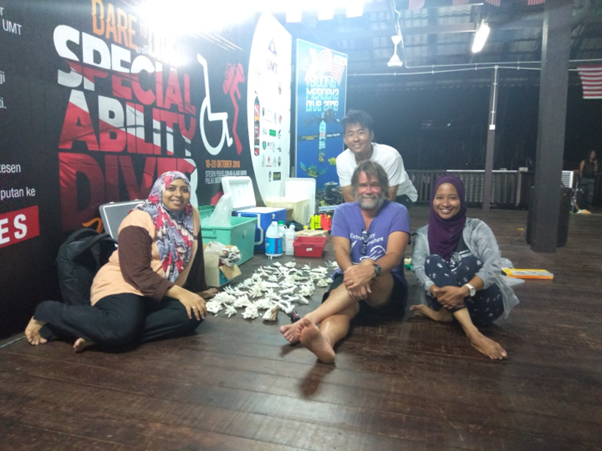
Visit by Professor Dr. Andrew Baird from the James Cook University, Australia allowing RRC to expand taxonomic collaboration with renowned coral taxonomist. Several coral specimens in RRC are believed to be new records and likely new to science, pending detailed examination by Prof Baird.
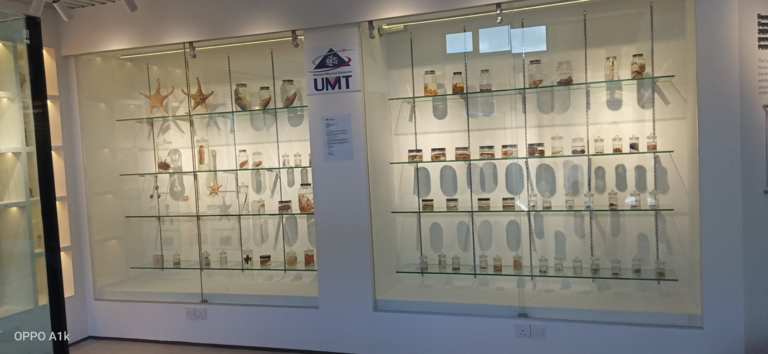
Consultancy project done by RRC at the Eco-Museum, Forest City, Johor.
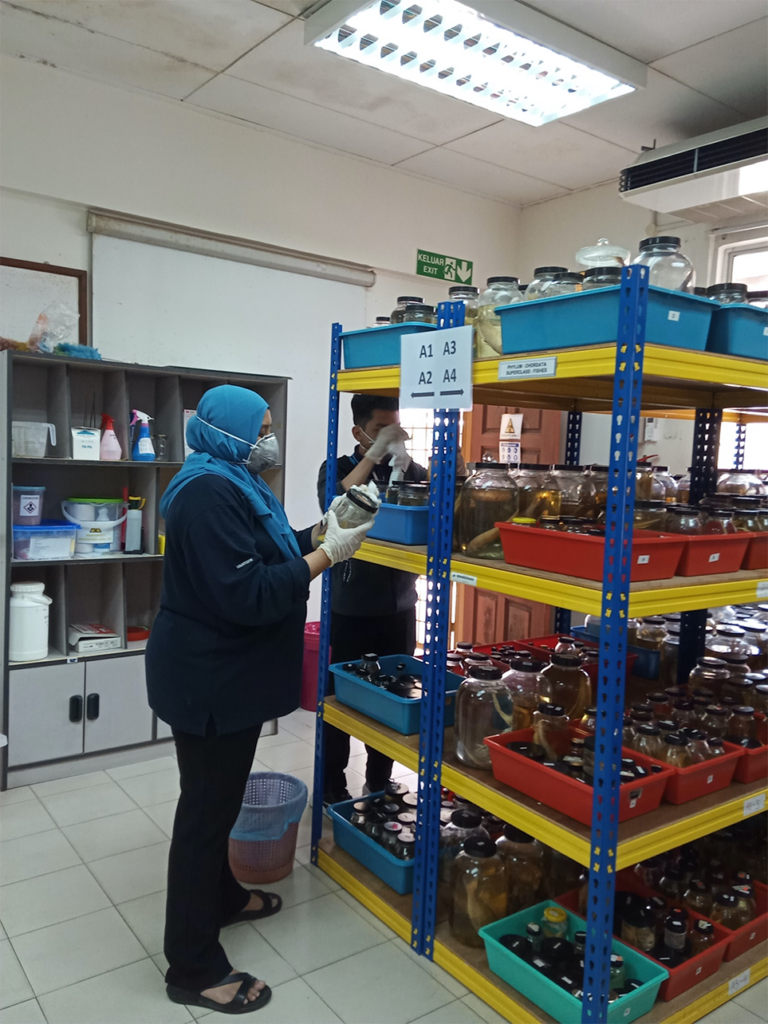
Periodic checks on the specimens ensuring the deposited specimens are in good condition for research and knowledge transfer for a long time.
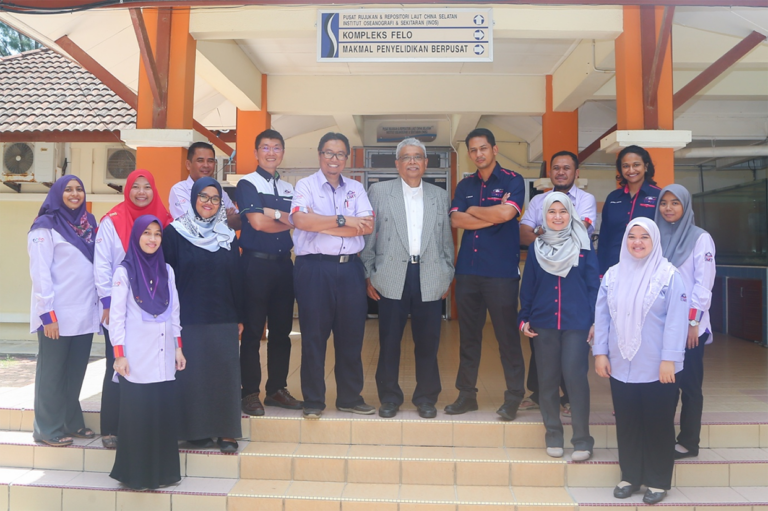
The South China Sea Repository and Reference Centre (RRC) team with UMT marine taxonomists in front of the RRC office.

Copyright © INOS | Institute of Oceanography and Environment | Universiti Malaysia Terenganu | 2024. All rights reserved.